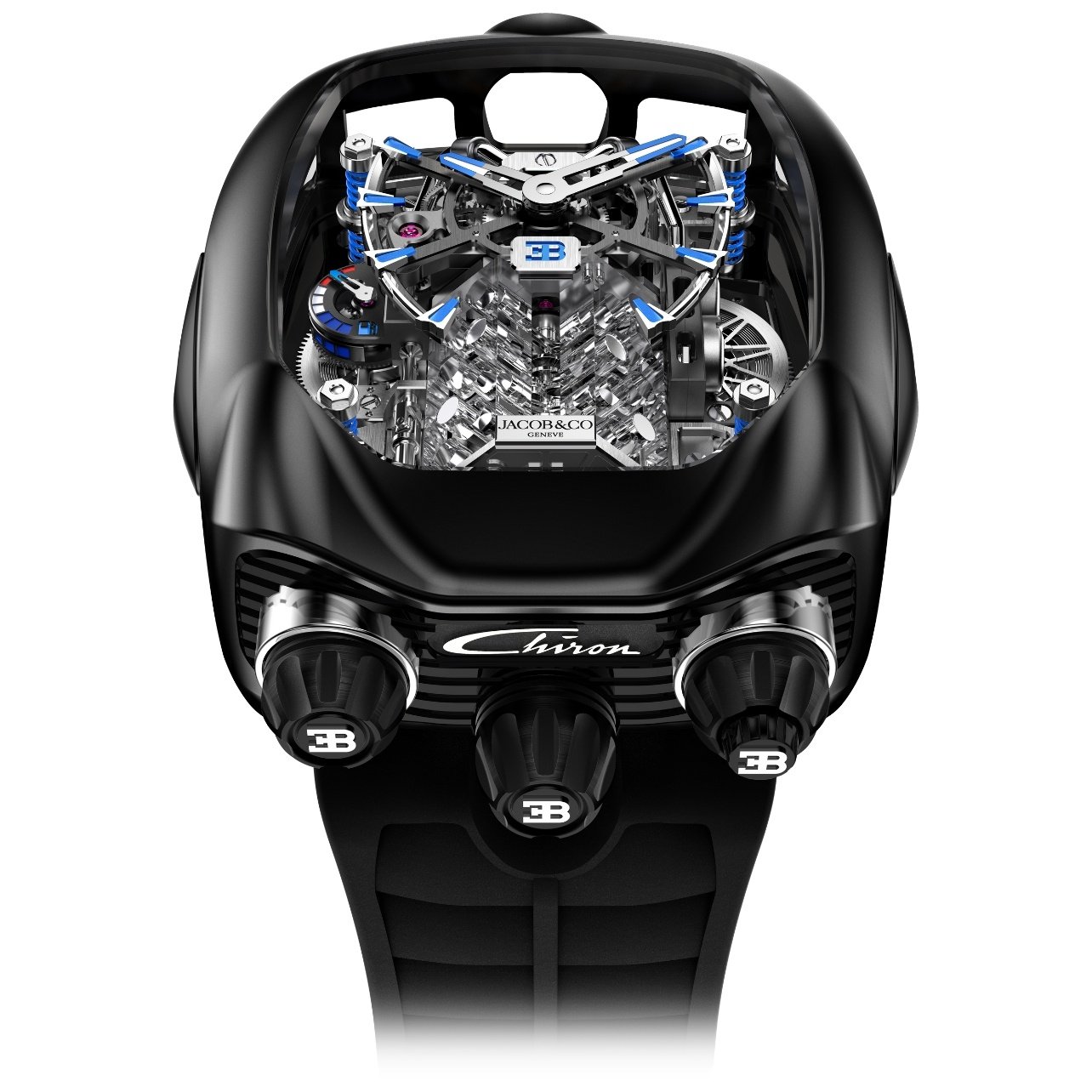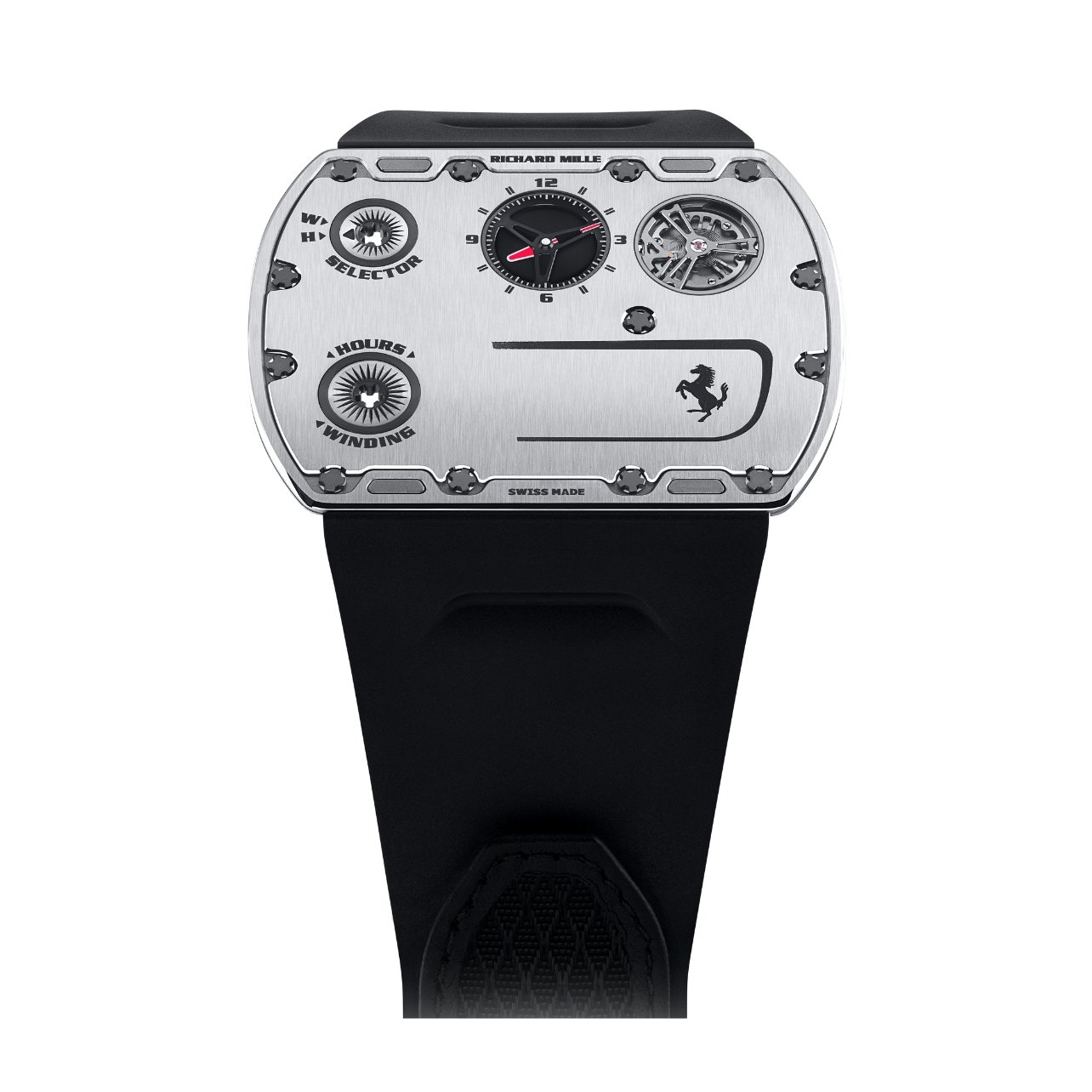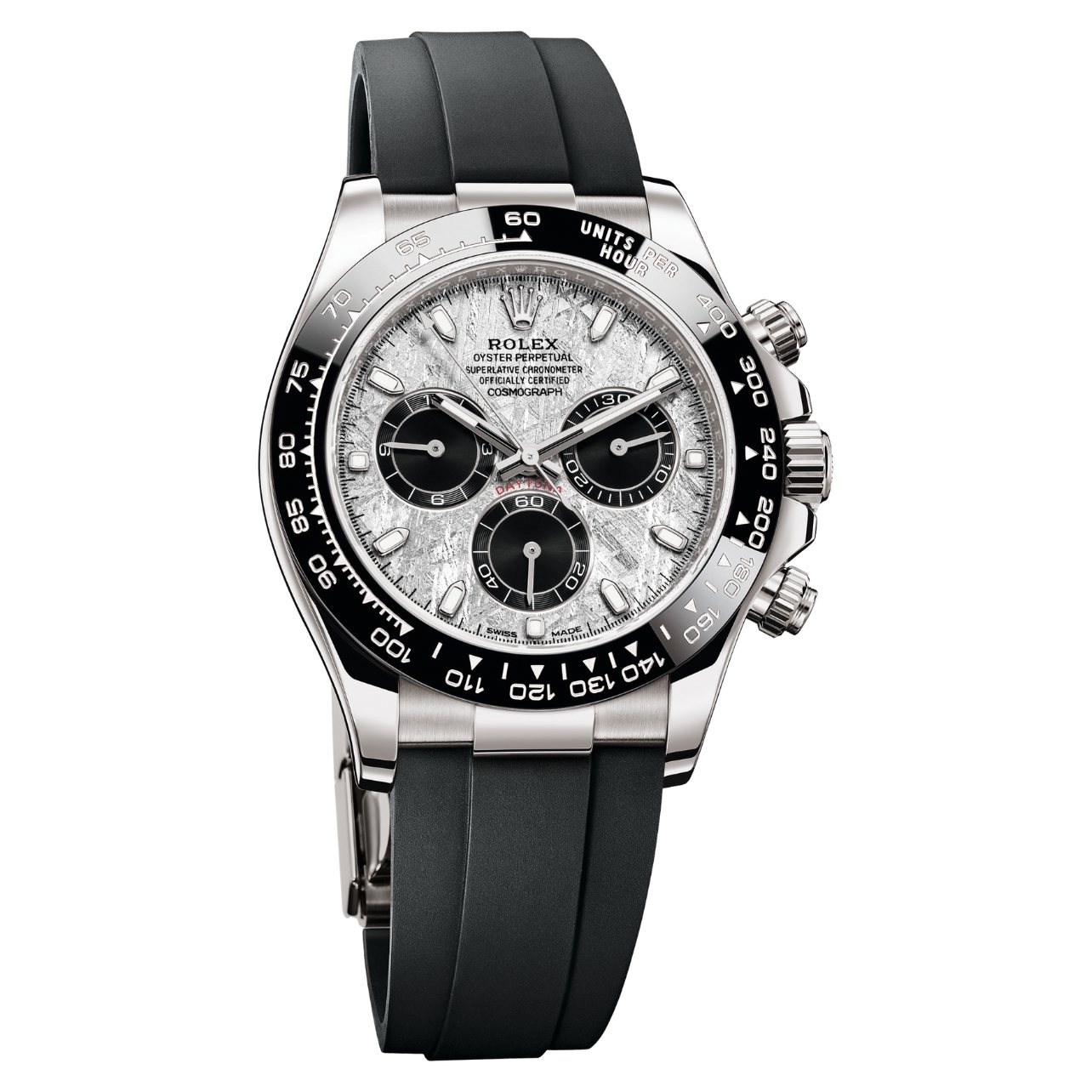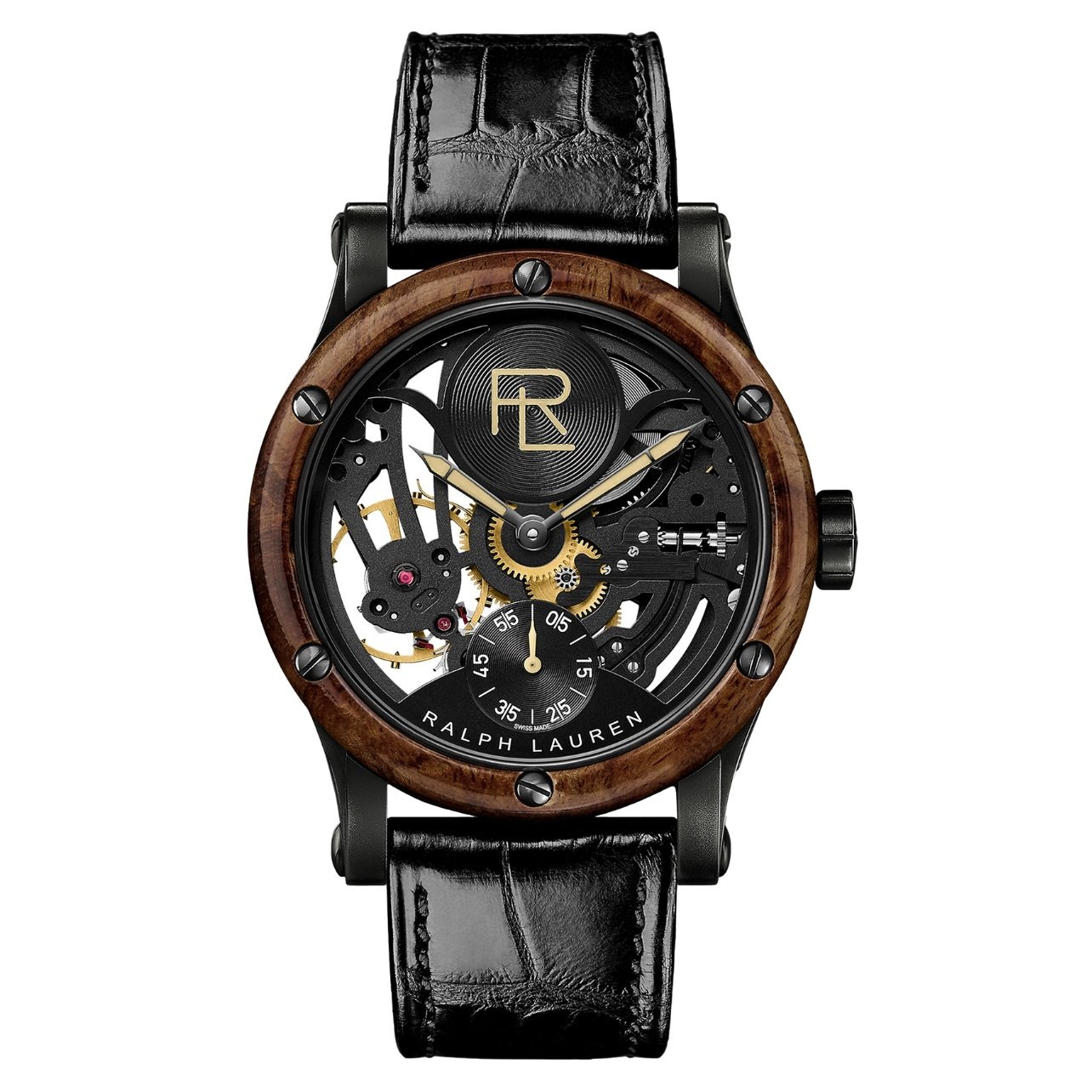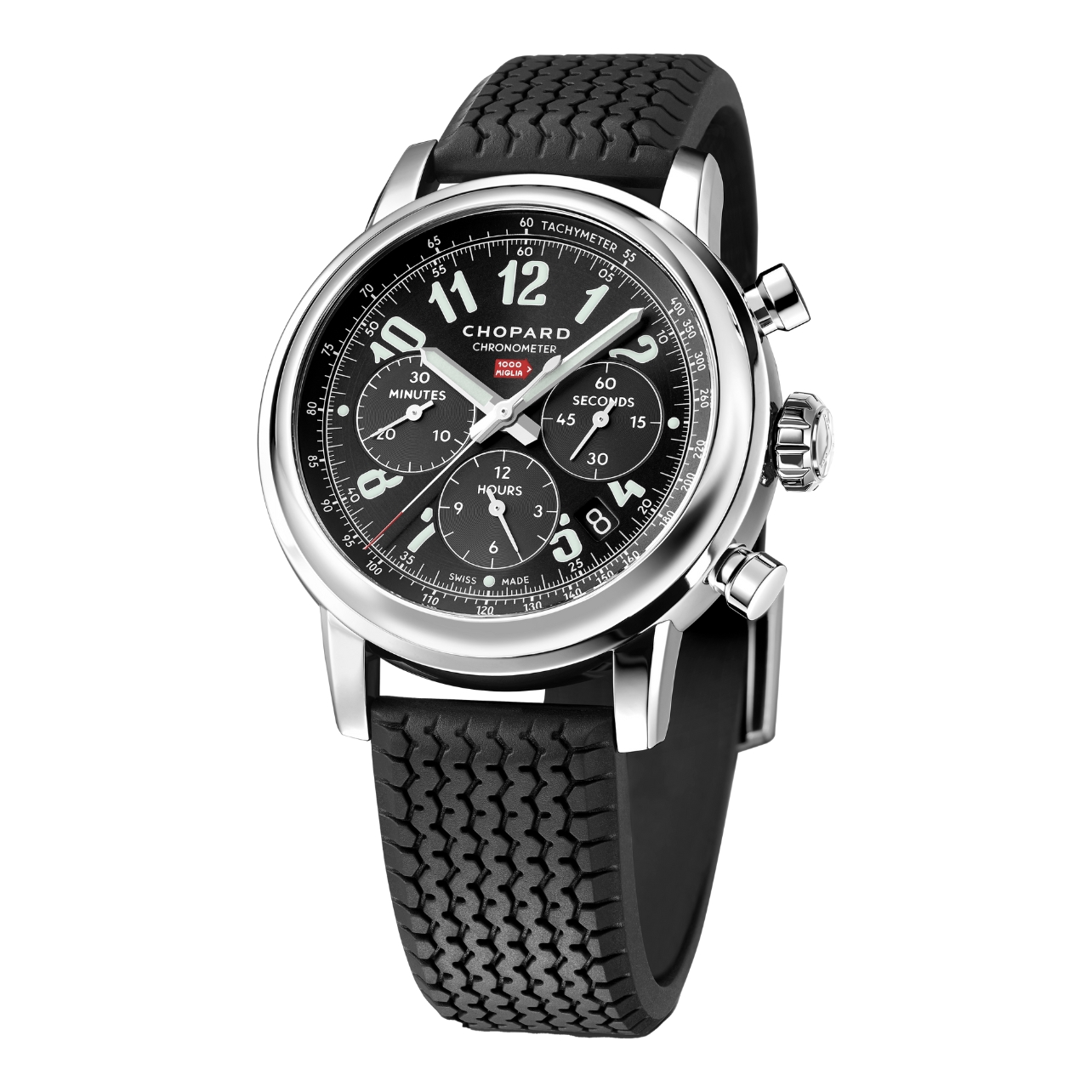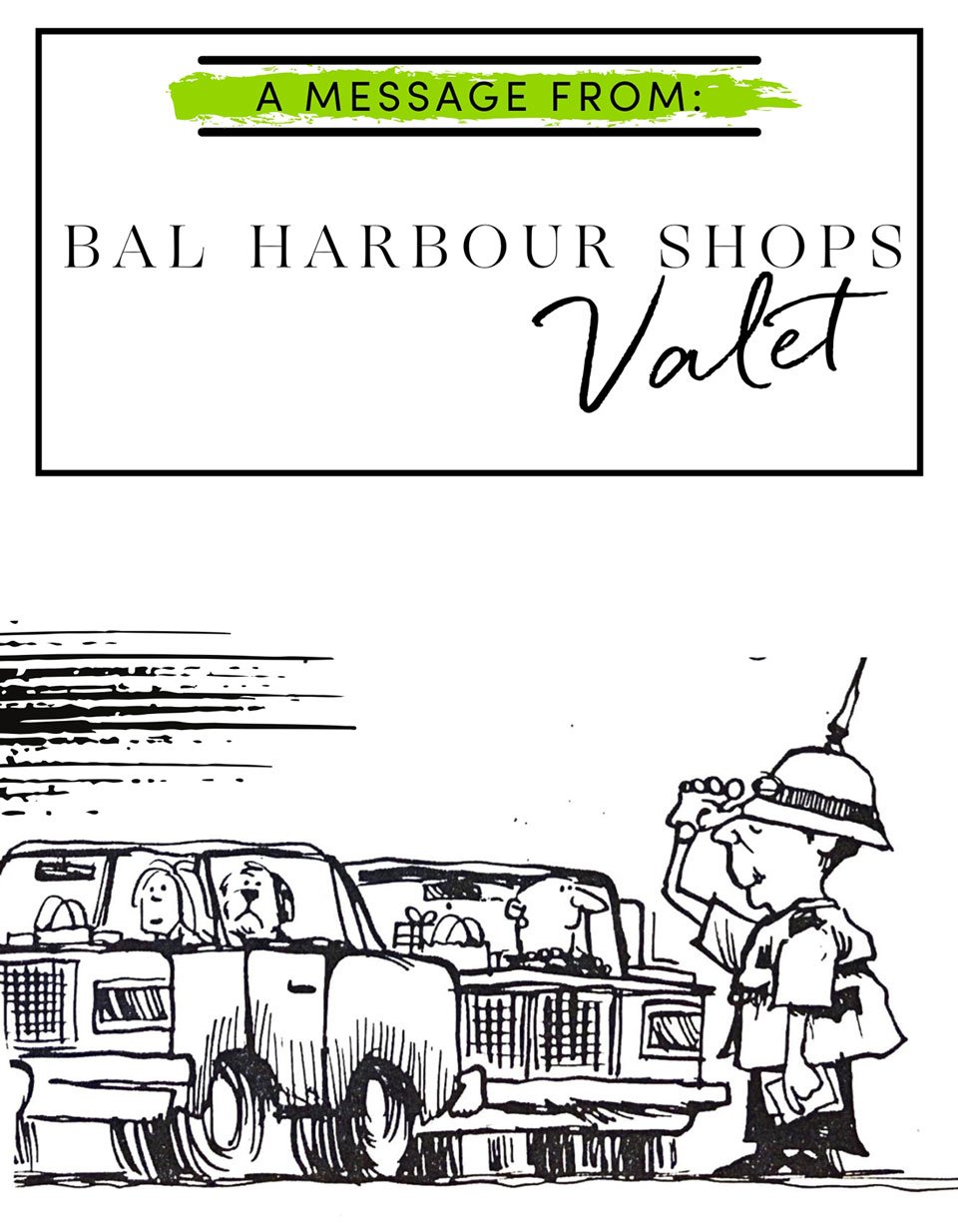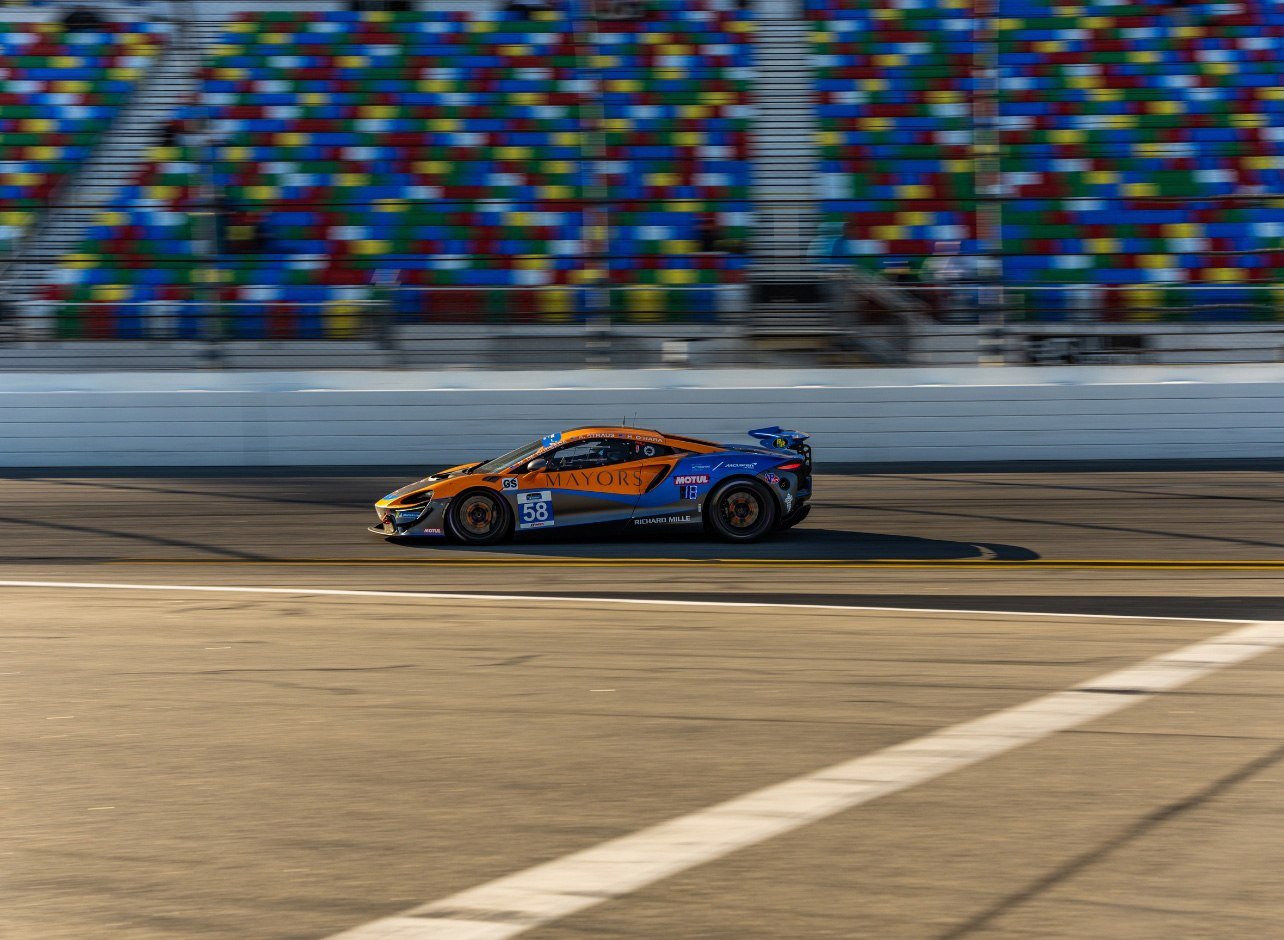
Richard Mille’s extensive motorsport partnerships include supporting drivers at races including the IMSA Pilot Challenge, seen here at Daytona Beach

Charles Leclerc wearing the Richard Mille UP-01 Ferrari
By Joshua Hendren
Few sports have a history so closely entangled with haute horology as the high-octane world of motorsport. Indeed, timekeeping has been fundamental to tracking a driver’s performance behind the wheel, where milliseconds can mean the difference between glory and defeat.
The love affair between racers and watchmakers stretches as far back as the late 19th century, when horse-drawn carriage races were timed using early pocket chronographs. In 1894, the world’s first competitive motor race took place, from Paris to Rouen, in cars powered by steam and petrol. The final heat ran a distance of 79 miles and was plagued by poor timekeeping, resulting in multiple race times being recorded.
It wasn’t until the 1930s, when global sports car racing, both amateur and professional, truly flourished, that precise timekeeping during races became commonplace. Heuer (later known as TAG Heuer) was an early pioneer. The Swiss watchmaker began by making dash-mounted rally timers, which later migrated to the wrists of F1 racers in the ‘50s and 60s.
Rolex also fostered a pioneering relationship with motorsport, reaching back to 1935, when Sir Malcolm Campell set a new land speed record, driving Bluebird over 300 miles per hour on the Utah salt flats with a Rolex Oyster strapped to his wrist. Campbell later introduced the watch to his racer friends, and in 1963, Rolex introduced the Cosmograph Daytona, which was famously worn by Paul Newman. Since then, the Swiss brand has ramped up ties with motorsport, sponsoring the Daytona Speedway from the late ‘50s and, most notably, becoming the title sponsor of F1 in 2013, its signature cadmium green logo plastered across cars, drivers, and advertising boards.
“F1 is the ultimate engineering race, competing and operating at the highest level,” says multiple Formula 1 Grand Prix winner Mark Webber. “Rolex champions performance, innovation, and precision through the brand’s partnership with the pinnacle of motorsport, making the link between Rolex and F1 very authentic and natural.”
As of late, big, new players have expanded into the world of F1, such as the ultra-luxury watchmaker Richard Mille. Felipe Massa first debuted a Richard Mille watch on the racetrack during the 2006 Hungarian Grand Prix. More recently, the brand unveiled the fruit of its first collaboration with Ferrari, the RM UP-01. Measuring a mere 1.75mm in thickness, the timepiece toppled the Bulgari Octo Finissimo Ultra as the record-holder for the world’s thinnest watch and has shimmered on the wrists of F1 stars Carlos Sainz and Charles Leclerc. Elsewhere, jewelers including Jacob & Co. and Chopard continue to push for perfection with killer, automotive-inspired designs.
